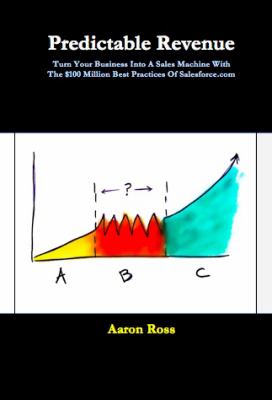Predictable Revenue – Aaron Ross
Most people do not want to be sold. They want to ensure they make an informed decision. A bad sale can cost a brand a lot. Predictable Revenue, by Aaron Ross, is a good book for you to understand the sales process today. I have read this book earlier. However, we wanted to refine our sales process at DCKAP and decided to read it again. One thing I realized when you read a book, the second time, – it is faster and also you understand better.
In order for you to generate predictable revenue, you need to have predictable leads. Aaron recounts his days at Salesforce on how he built a strong opportunity generation team. The differences between the Sales Development Representative and Account Executive is clearly explained. Most companies have these roles combined into one. Aaron says it is not a good idea. In startups, it is hard and you will have to wear multiple hats. However, in order for you to scale, you need to have these processes in place.
Who is a Sales Development Representative (SDR)? SDR is someone who generates opportunities for the Account Executive to close. SDR’s are measured by the number of opportunities they create. One SDR can be responsible to generate opportunities for 2-3 Account Executives. They need to generate at least 10 opportunities a month.
Who is an Account Executive (AE)? Account Executive (AE) is someone who is a quota carrying executive. They should not spend their time prospecting for new opportunities (net new cold leads). There will be overlaps between SDR and AE role. Account Executives need to qualify the opportunity generated by SDR. If there are targetted accounts, it is ok for Account Executives to prospect.
Did I catch you at a bad time? This is a great question, to begin with when someone is not expecting your call.
Never take No for an answer until it comes from a decision maker: As salespeople, we often make this mistake. You need to be talking to the decision maker and hear it from them. (They usually also tell you why they are not interested). Recently, we did an email campaign for a user group event. One prospect had looked at our email a few times. I contacted her and she said she was not interested in our products/services. A nice no and I moved the lead to recycled. However, at the user group meeting, I happened to sit next to one of the owners of that company. We had a simple marketing material at each table. He had looked at it and he initiated a conversation with me. This became a great opportunity. A very good learning and it reinforced what Aaron said in his book.
Go higher up, Ask for referrals: Going higher up in the organization chart, asking for referrals to the people reporting to them or even two layers down work well. When you use names genuinely, people respond. I met a CEO at a conference, called him post the event and he passed on a contact in his company who is responsible for evaluating e-commerce solutions and asked me to work with her. Since the request came from her boss, she responded well. However, later she went cold when we wanted to set up a demo. It was very hard. I thought this could be a great opportunity. I sent her many emails, called multiple times, however she would not respond. I called the CEO again and explained about the situation and also articulated more on why our solution was better. He said they were still actively looking for a good e-commerce solution. He was glad I called and asked me to send all the notes to his subordinate again and copy him on it. I did exactly as he said. The CEO’s sub-ordinate responded right away and this opportunity got back on track.
Ideal Customer Profile, Ideal Partner Profile, Giving out proposals (If you are not winning 50% of the proposals you are sending, you are being too easy), decision-making process (come up with a template to set expectations), probing with good questions (do not be shy to probe) to identify if the lead is a good fit or not,market response representative (for every 400 leads/month, you need a market response representative), spending at least 25% of your time with the customer, CEO’s understanding the lead generation process are other things Aaron talks about in his book.




Leave a Reply